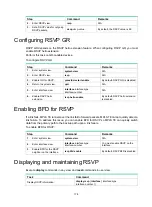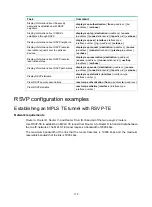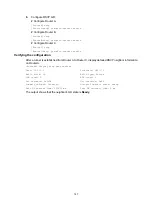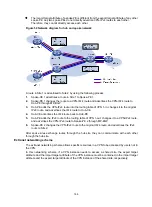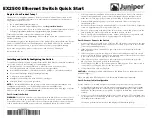
185
Tunnel Attributes :
LSP ID : 23331 Tunnel ID : 1
Admin State : Normal
Ingress LSR ID : 1.1.1.9 Egress LSR ID : 4.4.4.9
Signaling : RSVP-TE Static CRLSP Name : -
Resv Style : SE
Tunnel mode : -
Reverse-LSP name : -
Reverse-LSP LSR ID : - Reverse-LSP Tunnel ID: -
Class Type : CT0 Tunnel Bandwidth : 2000 kbps
Reserved Bandwidth : 2000 kbps
Setup Priority : 7 Holding Priority : 7
Affinity Attr/Mask : 0/0
Explicit Path : -
Backup Explicit Path : -
Metric Type : TE
Record Route : Disabled Record Label : Disabled
FRR Flag : Disabled Backup Bandwidth Flag: Disabled
Backup Bandwidth Type: - Backup Bandwidth : -
Route Pinning : Disabled
Retry Limit : 10 Retry Interval : 2 sec
Reoptimization : Disabled Reoptimization Freq : -
Backup Type : None Backup LSP ID : -
Auto Bandwidth : Disabled Auto Bandwidth Freq : -
Min Bandwidth : - Max Bandwidth : -
Collected Bandwidth : -
# Execute the
display ip routing-table
command on Router A to verify that a static route entry with
interface Tunnel 1 as the output interface exists. (Details not shown.)
RSVP GR configuration example
Network requirements
Router A, Router B, and Router C run IS-IS, and all of them are Layer 2 devices.
Use RSVP-TE to establish a TE tunnel from Router A to Router C.
Configure RSVP GR on the routers to ensure continuous forwarding when a router reboots.
Figure 46 Network diagram
Configuration procedure
1.
Configure IP addresses and masks for interfaces. (Details not shown.)
2.
Configure IS-IS to advertise interface addresses, including the loopback interface address.
(Details not shown.)








